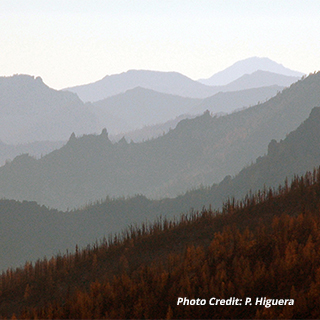Lab Alumni
POST-DOCTORAL SCIENTISTS
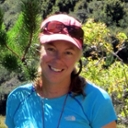
Kimberly Davis, PhD, Postdoctoral Scientist, 2016-2019; Research Scientist, 2020-2022
Dr. Davis earned her PhD in Ecology and Environmental Science from Montana State University in spring 2016. Her dissertation research focused on understanding the drivers and feedbacks of lodgepole pine invasion in New Zealand and Patagonia, as part of the NSF-funded WildFIRE PIRE project. As a post-doc, Dr. Davis led work investigating post-fire tree regeneration of ponderosa pine and Douglas-fir across low-elevation forests in the western U.S. Her work is jointly funded by a Joint Fire Science Program grant titled “Climate variability and post-fire regeneration in the Northern Rockies,” and a NSF grant lead by collaborator and FCFC faculty Solomon Dobrowski. In 2020, Kim transitioned to a research scientist position, as she continued to work on post-fire conifer regeneration through new projects funded by The Nature Conservancy and the USGS's North Central Climate Adaptation Science Center. In November 2022, Dr. Davis started a full-time position as Research Ecologist at the Missoula Fire Lab, part of the USFS’s Rocky Mountain Research Station.
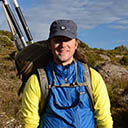
Jesse Morris, Postdoctoral scientist 2013-2015
Jesse holds a PhD in Geography from the University of Utah. His research interests are in examining long-term disturbance history, including fire and insect outbreaks, and understanding how regime shifts are modulated by climate and human activity. As a postdoc in the lab, Jesse worked as part of the WildFIRE PIRE team, investigating the causes and consequences of fire in the Central Plateau of Tasmania, Australia. Jesse's research and publication are available on his web site, jessemorris3.com. Follow Jesse on Twitter @jesselmorris3
Post-doc Related Publications:
Morris, J. L., P. E. Higuera, S. Haberle, and C. Whitlock. 2017. Modern pollen from small hollows reflects Athrotaxis cupressoides density across a wildfire gradient in subalpine forests of the Central Plateau, Tasmania, Australia. The Holocene 27:1781-1788.
Morris, J. L., K. K. McLauchlan, and P. E. Higuera. 2015. Sensitivity and complacency of sedimentary biogeochemical records to climate-mediated forest disturbances. Earth-Science Reviews 148:121-133.
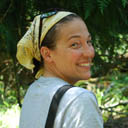
Kelly Derr, Postdoctoral scientist 2010-2014
Kelly was a Research Scientist (2010-2012) and Post Doctoral Fellow (2013) in the lab. She received her PhD from Washington State University in 2012. As an archaeologist, her research focused on anthropogenic burning and human-environment-climate interactions, with a focus on identifying human arrival into ecosystems using fossil pollen and charcoal records. As of Feb. 2014, Kelly is a Project Archaeologist with Historical Research Associates in Portland, OR.
PHD STUDENTS
 Kyra Clark-Wolf (she/her), PhD candidate, 2017-2022
Kyra Clark-Wolf (she/her), PhD candidate, 2017-2022
Kyra is an PhD candidate in the Systems Ecology Program at the University of Montana. Kyra is studying the causes and biogeochemical consequences of wildfires over the past 2500 yr in the Northern Rockies, as part of the NSF-funded Big Burns Project. In October 2018, Kyra was awarded a Joint Fire Science Program Graduate Research Innovation (GRIN) fellowship, to study post-fire conifer regeneration following two large wildfires that burned during the regional fire year of 2017. Kyra graduated from Colorado College, suma cum laude, with a B.A. in Environmental Science, in 2016. kyra.wolf@umontana.edu
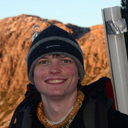
Adam Young, PhD 2011-2018
Adam earned his PhD in Natural Resources from the University of Idaho in May 2018, for his dissertation titled "Sensitivity of past, present, and future fire regimes to climate and vegetation variability in boreal forest and tundra ecosystems." Adam was a PhD student in the College of Natural Resources at the University of Idaho, and a visiting scientist at the University of Montana (2015-2017). In addition to funding from a NSF grant, Adam's work was funded by a Joint Fire Science Program Graduate Research Innovation (GRIN) Fellowship, and a NASA Earth and Space Science Fellowship. Adam has a B.S. degree in Environmental Biology from the College of Environmental Science and Forestry, State University of New York, Syracuse, NY, and a MS in statistics from the University of Idaho. After earning his PhD, Adam started a position as a Postdoctoral Research Associate in the Richardson Lab at Northern Arizona University, in July 2018. adam.young@nau.edu
Dissertation-related publications:
Young, A. M., P. E. Higuera, J. T. Abatzoglou, P. A. Duffy, and F. S. Hu. 2019. Consequences of climatic thresholds for projecting fire activity and ecological change. Global Ecology and Biogeography 28: 521-532. https://doi.org/10.1007/s10980-018-00766-8
Young, A. M., P. E. Higuera, P. A. Duffy, and F. S. Hu. 2017. Climatic thresholds shape northern high‐latitude fire regimes and imply vulnerability to future climate change. Ecography 40:606-617. *Thomson Reuters Highly Cited Paper*
Hu, F. S., P. E. Higuera, P. A. Duffy, M. L. Chipman, A. V. Rocha, A. M. Young, R. Kelly, and M. Dietz. 2015. Tundra fires in the Arctic: Natural variability and responses to climate change. Frontiers in Ecology and the Environment 13:369-377.

Kerry Kemp, PhD, 2010-2015
Kerry earned her PhD from the College of Natural Resources at the University of Idaho in December 2015 for her dissertation titled "Wildfire and Climate Change in Mixed-Conifer Ecosystems of the Northern Rockies: Implications for Forest Recovery and Management." In 2012 Kerry was awarded a Joint Fire Science Program Graduate Research INnovation (GRIN) fellowship and a Stillinger Forest Science Fellowship to help fund her research. Prior to graduate school, Kerry earned a BA in Ecology and Evolutionary Biology from the University of Colorado, Boulder (summa cum laude). Kerry is currently employed as a Forest Ecologist for the Nature Conservancy in central Oregon.
Dissertation-related publications:
Kemp, K. B., P. E. Higuera, P. Morgan, and J. T. Abatzoglou. 2019. Climate will increasingly determine post-fire tree regeneration success in low-elevation forests, Northern Rockies, USA. Ecosphere. 10: e02568.
Kemp, K. B., P. E. Higuera, and P. Morgan. 2016. Fire legacies impact conifer regeneration across environmental gradients in the U.S. northern Rockies. Landscape Ecology 31:619-636.
Stevens-Rumann, C. S., K. B. Kemp, P. E. Higuera, B. J. Harvey, M. T. Rother, D. C. Donato, P. Morgan, and T. T. Veblen. 2018. Evidence for declining forest resilience to wildfires under climate change. Ecology Letters 21:243-252.
Blades, J. J., P. Z. Klos, K. B. Kemp, T. E. Hall, J. E. Force, P. Morgan, and W. T. Tinkham. 2016. Forest managers’ response to climate change science: evaluating the constructs of boundary objects and organizations. Forest Ecology and Management 360:376-387.
Klos, P. Z., J. Abatzoglou, A. Bean, J. Blades, M. A. Clark, M. Dodd, T. E. Hall, A. Haruch, P. E. Higuera, J. D. Holbrook, V. S. Jansen, K. Kemp, A. Lankford, T. E. Link, T. Magney, A. J. H. Meddens, L. Mitchell, B. Moore, P. Morgan, B. A. Newingham, R. J. Niemeyer, B. Soderquist, A. A. Suazo, K. T. Vierling, V. Walden, and C. Walsh. 2015. Indicators of climate change in Idaho: An assessment framework for coupling biophysical change and social perception. Weather, Climate, and Society 7:238-254.
MS Students
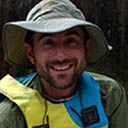
Paul Dunnette, M.S. student 2010-2013
Paul earned his MS degree in Natural Resources from the Univeristy of Idaho in Fall 2013, for his thesis titled "Biogeochemical Impacts of Fire Over Four Millennia in a Rocky Mountain Subalpine Watershed." His work combined his interestes in forest ecosystem processes, fire ecology, and disturbance history. While a graduate student, Paul was awarded a Stillinger Forest Science Fellowship. Prior to graduate school, Paul obtained a BS degree in Environmental Science from Portland State University, and a B.S. in Journalism from the University of Portland.
Thesis-related publicaitons:
Dunnette, P. V., P. E. Higuera, K. K. McLauchlan, K. M. Derr, C. E. Briles, and M. H. Keefe. 2014. Biogeochemical impacts of wildfires over four millennia in a Rocky Mountain subalpine watershed. New Phytologist 203:900-912.
Leys, B. A., P. E. Higuera, K. K. McLauchlan, and P. V. Dunnette. 2016. Wildfires and geochemical change in a subalpine forest over the past six millennia. Environmental Research Letters 11:125003.
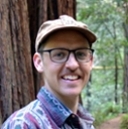
Tyler Hoecker, MS student 2014-2017
Tyler earned his MS in the Systems Ecology Program at the University of Montana in May 2017, for his thesis titled "Understanding the patterns and drivers of Alaskan fire-regime variability across spatial and temporal scales." Tyler focused on a synthesis of published paleofire records, which was recognized for an Outstanding Student Paper Award by the American Geophysical Union in 2015, and developing new records from the Nowitna National Wildlife Refuge as part of the NSF-funded PalEON project. Tyler earned a B.A. in Environmental Science from Willamette University in 2011, and worked for the Forest Service and in the private section surveying salmonid habitat in the Columbia River basin. After earning his MS in 2017, Tyler started a PhD program at the University of Wisconsin, working with Professor Monica Turner in the Ecosystem and Landscape Ecology Lab. hoecker@wisc.edu
Thesis-related publicaitons:
Hoecker, T.J., Higuera, P.E., Kelly, R. and Hu, F.S. 2020. Arctic and boreal paleofire records reveal drivers of fire activity and departures from Holocene variability. Ecology. InPress. doi:10.1002/ecy.3096
Hoecker, T. J., and P. E. Higuera. 2019. Forest succession and climate variability interacted to control fire activity over the last four centuries in an Alaskan boreal landscape Landscape Ecology 34: 227–241
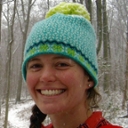
Lacey Hankin, MS student, 2016-2018
Lacey earned her MS in the Systems Ecology Program at the University of Montana in May 2018, for her thesis titled "Annual climate impacts on tree growth and post-fire regeneration in ponderosa pine and Douglas-fir in the northern Rocky Mountains." Lacey graduated from Williams College with a B.A. in Biology and History, in 2014. After earning her MS, Lacey started a PhD program in Ecology, Evolution, and Conservation Biology at the University of Nevada, Reno, in summer 2018, working in the Bisbing Forest Ecology & SilvicultureLab. lacey.hanking@gmail.com
Thesis-related publications:
Hankin, L. E., P. E. Higuera, K. T. Davis, and S. Z. Dobrowski. 2019. Impacts of growing-season climate on tree growth and post-fire regeneration in ponderosa pine and Douglas-fir forests. Ecosphere. 10:e02679
Hankin, L. E., P. E. Higuera, K. T. Davis, and S. Z. Dobrowski. 2018. Accuracy of node and bud-scar counts for aging two dominant conifers in western North America. Forest Ecology and Management 427:365-371.
UNDERGRADUATE AND POST-GRADUATE RESEARCH ASSISTANTS
Madison Miller, Undergraduate Student, 2018-2021
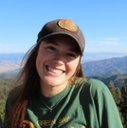
Madison majored in Chemistry and minored in Biology, with the hopes of someday teaching high school science. She was enrolled in the Davidson Honors College, and completed an honors thesis as part of her work in the Lab. She started in the lab in the fall of 2018, helping with field work in the Lolo Peak and Sunrise fires and with field and lab work for the Big Burns Project. She continued her work through spring 2021, preparing lake-sediment samples and counting charcoal as part of the Big Burns project.
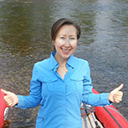
Yulia Misevich-Crofutt, 2019-2021
Yulia graduated from the W.A. Franke College of Forestry and Conservation in spring 2020, with a BS in Resource Conservation and a minor in Ecological Restoration; she also was awarded the Mortar Board award for Outstanding Senior in the Resource Conservation program. Yulia joined the lab in fall 2019, working to develop the lake-sediment record from Leopard Lake, Colorado, as part of a project with the USFS Aldo Leopold Wilderness Research Institute. Yulia’s work focused on developing the charcoal record to help understand the fire history of the montane forests of the study area.
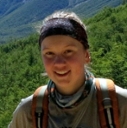
Undergraduate student, 2018-2020
Izzy graduated from the W.A. Franke College of Forestry and Conservation with a BS Wildlife Biology, and a minor in Climate Change Studies. She started working in the lab in the fall of 2018, helping with lab work for the Big Burns Project. Outside of the Lab, Izzy worked in the field measuring the effect of moose browsing on balsam fir for the Wolves and Moose project on Isle Royale National Park during the summers of 2018 and 2019; during January 2018, she took part in the Patagonia field studies course in the Aysén region of Chile. Izzy completed a senior thesis for her wildlife biology program based on her research on Isle Royale National park.

Undergraduate student, 2018-2019
Allie graduated from the W.A. Franke College of Forestry and Conservation in spring 2019 with a BS in Wildlife Biology, a minor in Ecological Restoration, and an emphasis in fire ecology. She joined the lab in spring 2018 and participated in research associated with the NSF-funded Big Burns Project and the JFSP-funded post-fire tree regeneration project, both in the Northern Rockies. In the summer of 2018 Allie also undertook independent research investigating changes in bird abundance and species diversity in recently burned forests, as part of the NSF-funded Research Experience for Undergraduates program. Over the following fall and spring, she analyzed the data she collected and completed a senior thesis. After graduation, Allie was selected for an Ecological Society of America/US Geological Survey Cooperative Summer Internship Program and spend her summer on Chesapeake Bay as an intern with the Patuxent Wildlife Research Center in Laurel, Maryland. Allie shared words and photos about her experience on the College's tumbler feed.
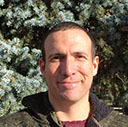
Lawrence Crofutt, undergraduate student, 2016-2018
Lawrence was an undergraduate student in the College of Forestry and Conservation, graduating with a degree in Forestry in Dec. 2018. He joined the Lab during the autumn semester of 2016 and assisted with research examining post-fire tree regeneration of ponderosa pine and Douglas-fir across low-elevation forests in the western U.S. Lawrence also complete a senior thesis, titled "Post-fire conifer regeneration growth patterns in low-elevation forests of the U.S. Northern Rockies," partially funded by an Ireen Evers Undergraduate Reserach Scholarship.

Lauren Converse, undergraduate student, 2017-2018
Lauren was an undergraduate student in the W.A. Franke College of Forestry and Conservation, graduating with a major in Forestry in spring 2018. She joined the Lab during the summer of 2017 and is assisting with research examining post-fire tree regeneration of ponderosa pine and Douglas-fir, and with the Big Burns Project investigating the causes and consequences of wildfires over the past 2500 yr, both in the Northern Rockies.
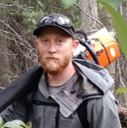
Lucas Townsend, undergraduate student, 2016-2017
Lucas graduated with a B.S. in Forestry from the W.A. Franke College of Forestry and Conservation, in May 2017. He joined the lab in summer 2016 to work on a NPS-funded project investigating fire history and ecological impacts of fuels treatments near McCarthy Alaska, in Wrangle St. Elias National Park. Lucas worked on this project for his senior thesis, using dendrochronology to reconstruct the history stand-replacing fires and post-fire stand dynamics. Lucas started a MS program in Forestry at the University of Montana in fall 2017, working with Professor Beth Dodson.
Andy Neumann, undergraduate student, 2016-2017
Andy was an undergraduate student in the College of Forestry and Conservation, graduating with a BS in Resource Conservation. He worked in the lab from spring 2016 through spring 2017, helping develop fire-history records form Alaskan lake-sediment records, as part of the PalEON project.

Kerry Sullivan, research assistant, 2016
Kerry was a MS student in the College of Forestry and Conservation's Resource Conservation program. She worked in the lab from spring through fall 2016 helping develop fire-history records form Alaskan lake-sediment records, as part of the PalEON project. Kerry earned her BS in Biology from Green Mountain College, in Poultney, VT.
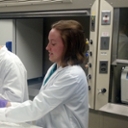
Camie Westfall, research assistant, 2016
Camie worked in the lab full time during the spring semester of 2016, and was integral in getting the new lab up and running at UM. She helped develop fire-history records form Alaskan lake-sediment records, as part of the PalEON project. Camie earned her BS in Environmental Biology from Pacific University, in Forest Grove, OR, in December 2015.
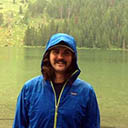
Adam Price, undergraduate 2013-2015
Adam was an undergraduate in the Geology program at the University of Idaho and worked in the Lab from October 2013 through December 2015. He helped develop fire history records from small hollow sediments from Tasmania, Australia, as part of the WildFIRE PIRE project.
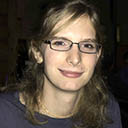
Cassidy Robertson, undergraduate, 2013-2015
Cassidy was an undergraduate student in the Ecology and Conservation Biology program in the College of Natural Resources. Cassidy worked in the lab from September 2013 through December 2015, helping develop fire history records from tundra ecosystems in Alaska, as part of the NSF "tundra-fire" project. During the summer of 2014, Cassidy worked as an intern at the College of Natural Resources' Taylor Wilderness Research Station in the Frank Church River of No Return Wilderness. Cassidy's research at the station focused on understanding the dendroecology of Douglas-fir across environmental gradients, and it will become part of her undergraduate thesis work.

Meghan Foard, Lab Technician 2014-2015
Meghan worked on the PalEON project, focusing on measuring tree-ring from white spruce trees to help understand growth-climate in boreal forests of Alaska. Meghan has a B.S. in Natural Science from Christian Brothers University in Memphis, TN and an M.S. in Environmental Science from Arkansas State University, Jonesboro.
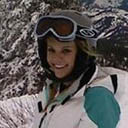
Rachel Albertson, undergraduate 2013-2015
Rachel Albertson graduated in 2015 with an undergraduate degree in Environmental Science. She worked in the lab helping develop fire history records from small hollow sediments from Tasmania, Australia, as part of the WildFIRE PIRE project.
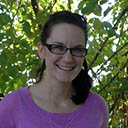
Kaitlynn Palmer, undergraduate 2013-2014
Kaitlynn was an undergraduate student in the Environmental Science program and worked in the lab helping develop fire history records from tundra ecosystem in Alaska, as part of the NSF "tundra-fire" project.
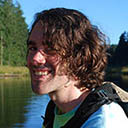
Patrick Flanigan, undergraduate student 2013
Patrick graduated in Dec. 2013 with a double major in Environmental Science and International Studies, winning an Alumni Award for Excellence and the Honors Program "Core Award." He worked in the lab from April-Dec. 2013, helping develop fire history records from small hollow sediments from Tasmania, Australia, as part of the WildFIRE PIRE project. In Fall 2013 Patrick assisted in collecting a lake-sediment core from the Gulf Islands of British Columbia, Canada, which he used to develop a senior thesis project.
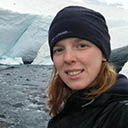
Shannon Pauli, undergraduate student 2011-2013
Shannon graduated with a B.S. degree in Fire Ecology and Management in 2013. She worked in the lab from July 2011 through July 2013, focusing on fire history in Colorado subalpine forests and tundra fire history in Alaska. In summer 2012, Shannon participated in three weeks of field work in Alaska, helping the lab collect lake sediment records from the Noatak National Preserve. Shannon write a senior thesis that focused on historic fire regimes in the Noatak National Preserve, combining GIScience and comparisons to existing fire history records.
Margaret Ward Keefe, Lab technician 2010-2012
Maggie was a lab technician in the Paleoecology and Fire Ecology Lab from 2010-2012 and was instrumental in setting up the lab and keep things running smoothly for its first few years. Maggie has a B.A. in Biology from Ithaca College, NY, and an M.S. in Forest Resources from the University of Maine, Orono.
Ryan Moran, undergraduate student 2011
Ryan was an undergraduate student in the College of Natural Resources working on a BS degree in Fire Ecology and Management. Ryan worked in the lab from July-December 2011, focusing on fire history and biogeochemical proxies from sediment cores from Rocky Mountain National Park.
Donnovan VanSant, undergraduate student 2011
Donnovan worked in the lab in the spring of 2011 and graduated with a B.S. in Geography from the Department of Geography in May 2011. Donnovan worked on gathering and organizing modern datasets on tundra fire history and vegetation in Alaska.
Justin Ziegler, undergraduate student 2011
Justin worked in the lab in the spring and early summer of 2011, focusing on fire history and biogeochemical proxies from sediment cores from Rocky Mountain National Park. After graduating from the College of Natural Resources with a B.S. in Fire Ecology and Management in the spring of 2011, Justin started graduate school at Colorado State University, where he is pursuing a M.S. degree in fire ecology.
